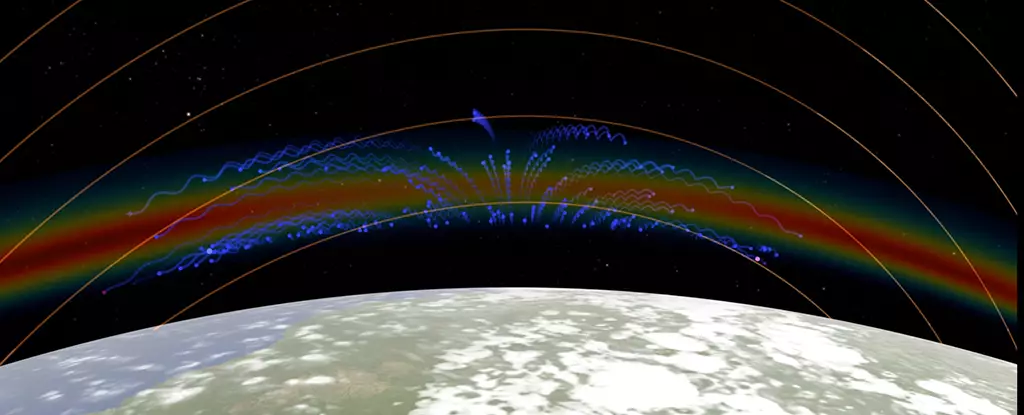NASA scientists have recently made a groundbreaking discovery in the ionosphere, a region of Earth’s atmosphere located between 48 and 965 kilometers above the surface. Using the Global-scale Observations of the Limb and Disk (GOLD) imaging instrument, researchers have identified peculiar X and C shapes amidst the electrically charged plasma bands of charged particles. These shapes, previously detected but now observed in greater detail, have raised questions about the underlying dynamics of the ionosphere.
Unraveling Mysteries During ‘Quiet Times’
Traditionally, the merging of plasma crests into X shapes was associated with geomagnetic disturbances caused by solar storms or volcanic eruptions. However, the latest data suggests that these formations occur even during “quiet times,” indicating the influence of localized factors. Computer models propose that lower atmospheric conditions may be affecting the movement of plasma, leading to the unexpected emergence of complex shapes in the ionosphere.
In addition to X shapes, NASA’s GOLD instrument has detected C-shaped and reverse C-shaped bubbles within the plasma. These formations, believed to be influenced by Earth’s winds, have been observed in close proximity to each other, challenging existing theories about their origin. While wind shear or tornadoes may play a role in shaping these bubbles, the exact mechanisms behind their formation remain unclear. Despite their relative rarity, with only two instances recorded so far, scientists are eager to delve deeper into the mysteries of these unique structures.
The presence of diverse plasma shapes in the ionosphere holds significance for communication and navigation technologies reliant on radio waves. Disruptions in the ionosphere, as evidenced by the anomalous formations observed by GOLD, can impact the transmission of signals and jeopardize crucial infrastructure. Understanding the behavior of plasma in the ionosphere not only enhances our knowledge of Earth’s atmospheric processes but also has practical implications for maintaining reliable communication networks.
The findings from this study underscore the complexities of the ionosphere and shed light on its dynamic nature. By harnessing cutting-edge technology and innovative research methodologies, scientists are unraveling the mysteries of Earth’s atmospheric layers and expanding our understanding of the broader cosmos. As astrophysicist Jeffrey Klenzing from NASA’s Goddard Space Flight Center aptly puts it, the unexpected diversity of plasma shapes in the ionosphere reveals the intricate dynamics at play within our atmosphere, challenging conventional assumptions and driving further exploration into the realm of atmospheric science.


Leave a Reply